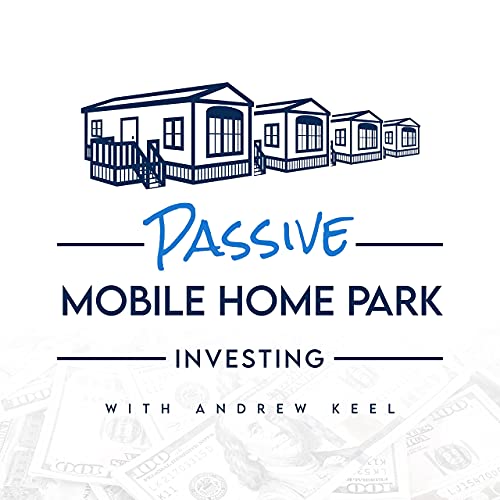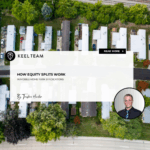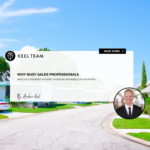Top Risks: Buying Mobile Home Parks with Small Lots and Older Mobile Homes
-
 Andrew Keel
Andrew Keel
SHOW NOTES
Welcome back to another episode of The Passive Mobile Home Park Investing Podcast, hosted by Andrew Keel!
In this episode, Andrew Keel dives deeper into his mini-series on some of the key risks in mobile home park investing, highlighting a critical yet often overlooked topic: investing in mobile home parks with small lot sizes and older mobile homes.
Andrew Keel discusses essential factors to consider, including:
- Challenges in Sourcing and Selling Smaller Mobile Homes: Discover why smaller mobile home park lot sizes can limit options and impact profitability.
- Zoning Hurdles: Learn about potential zoning and setback restrictions and how they can affect mobile home park operations.
- What is a Mobile Home’s Life Expectancy?: Understand the typical lifespan of older mobile homes and the maintenance costs that come with them.
Tune in for valuable insights and practical strategies to help you navigate these unique challenges and make smarter, more informed decisions in mobile home park investing.
***Andrew Keel and Keel Team Real Estate Investments (Keel Team, LLC) do not endorse any interviewee. This episode is for informational purposes only and should not be depended upon for investment purposes. ***
Andrew Keel is the owner of Keel Team, LLC, a Top 50 Owner of Manufactured Housing Communities with over 3,000 lots under management. His team currently manages over 40 manufactured housing communities across more than 10 states. His expertise is in turning around under-managed manufactured housing communities by utilizing proven systems to maximize the occupancy while reducing operating costs. He specializes in bringing in homes to fill vacant lots, implementing utility bill back programs, and improving overall management and operating efficiencies, all of which significantly boost the asset value and net operating income of the communities. Check out KeelTeam.com to learn more.
Andrew has been featured on some of the Top Podcasts in the manufactured housing space, click here to listen to his most recent interviews: https://www.keelteam.com/podcast-links. In order to successfully implement his management strategy, Andrew’s team usually moves on location during the first several months of ownership. Find out more about Andrew’s story at AndrewKeel.com.
Book a 1 on 1 consultation with Andrew Keel to discuss:
- A mobile home park deal review (get live feedback on your own MHP deal!)
- Mobile home park due diligence questions
- How to raise capital from investors for mobile home parks
- Mistakes to avoid in mobile home park investing, and more!
Click Here to book the 1 on 1 consultation: https://intro.co/AndrewKeel
Are you getting value out of this show? If so, please head over to iTunes and leave the show a quick review. I have a goal of hitting over 500 total 5-star reviews, and it would mean the absolute world to me if you could help contribute to that. Thanks ahead of time for making my day with your review of the show.
Would you like to see value-add mobile home park projects in progress? If so, follow us on Instagram: @passivemhpinvesting for photos and awesome videos from our recent mobile home park acquisitions.
Talking Points:
00:21 – Introduction: Welcome to The Passive Mobile Home Park Investing Podcast!
01:24 – Key Challenges: Exploring the complexities of investing in mobile home parks with smaller lots and older mobile homes.
01:47 – Market Desirability: Understanding why older mobile homes can be more challenging to sell and how this impacts market value.
03:04 – Sourcing Suitable Mobile Homes: Strategies for finding mobile homes that fit smaller lot sizes.
04:05 – Life Expectancy of Mobile Homes: Insights into the typical lifespan and maintenance needs of older mobile homes.
05:54 – Navigating Zoning Restrictions: Important zoning considerations and how they affect mobile home park investments.
08:11 – Key Takeaways for Investors: A recap of essential insights for passive mobile home park investors.
09:35 – Closing Remarks: Wrapping up the episode with final thoughts and next steps.
SUBSCRIBE TO PASSIVE MOBILE HOME PARK INVESTING PODCAST YOUTUBE CHANNEL https://www.youtube.com/channel/UCy9uI3KGQmFgABsr9lUtRTQ
Links & Mentions from This Episode:
Keel Team’s official website: https://www.keelteam.com/
Andrew Keel’s official website: https://www.andrewkeel.com/
Andrew Keel LinkedIn: https://www.linkedin.com/in/andrewkeel
Andrew Keel Facebook page: https://www.facebook.com/PassiveMHPinvestingPodcast
Andrew Keel Instagram page: https://www.instagram.com/passivemhpinvesting/
Twitter: @MHPinvestors
TRANSCRIPT
Welcome to the Passive Mobile Home Park Investing Podcast. This is your host, Andrew Keel. Today, I’m going to talk about top risk, meaning buying parks with small lots in small older homes.
I’m going to go on a little rant here. I had a conversation with a broker earlier today. He basically wasn’t understanding why I wanted a 100 basis point cap rate higher for a park with all older, flat, and rounded roof homes. I was saying there’s potentially going to be higher turnover here more than likely because of these older homes.
Home parks with more pitch roofs have newer homes. Not always have they been maintained the same way, but you can tell when you have an older park, kind of run down, with a lot of older homes in it that are 12-foot wide. Those are going to have higher turnover, and it’s hard to find the perfect tenant for one of those homes.
The top risk today is buying mobile home parks with small lots and small older homes. I’m also going to touch on a little bit about zoning issues that I’ve come across through our acquisitions process, our due diligence, and our ability to not replace homes as they leave or burn down, et cetera because of zoning issues, and that’s why due diligence is so important.
First up, small homes are less desirable to live in. They’re harder to reoccupy and sell. We brought in some park models, for example, which are like RVs. They’re typically in RV parks. We brought in like five or six of those into one of our parks in Illinois and they’re one-bedroom, little small, little houses and they’re so hard to sell because you need the perfect avatar to live in there.
You need the single, older lady who has a fixed income, and it’s just her and her little cat, and that’s it which is never the case. It’s typically a couple or a couple with kids that want to live in one of these homes, and it’s just so hard to sell those smaller homes. I think there’s something to be said about the whole tiny home movement in bigger markets because of the younger generation, the millennials that want to live in these, and they want to be close to the urban core.
However, in Midwestern markets where we’re looking at smaller homes, they definitely are harder to sell. I would say probably three times harder, not even two times harder. It’s going to take you three times as long to sell a single park-model home than it would a two or three-bedroom, two-bath home.
Also, it’s harder to find used homes and new homes that fit the size of those smaller lots. When you buy an older park that typically had those 12-foot-wide small homes from the 1960s that were on those lots. Then at some point, they were brought out and removed. It’s so much harder to fill those with new setback requirements, fire codes and so forth. You end up using park models or something similar. Again, it’s just way harder to sell those.
Also, new homes coming from the factories nowadays are 14–16 feet wide. They’re bigger. They have bigger electrical panels. The pedestal outside typically needs to be upgraded. It’s just something you need to be aware of when you’re buying these types of parks, and you should be able to demand 100 basis points higher cap rate when you’re negotiating on parks like these than you would a park that has a more diverse home age and size.
I think typically the age of the homes matters a lot. A real quick way to analyze that is a flat roof home is typically from the 1960s, the 12-foot wide flat roof homes. Round-roof homes are typically 1960s and 1970s. Then 1980s are like the metal on metal, typically with a pitched roof. Then 1990s, more of the vinyl-sided, shingle roof homes were most popular. It started becoming the most popular in the 90s and then 2000s and even today. The vinyl shingle is the most common home being put into parks when you’re looking at new inventory.
The average life expectancy of a mobile home, I asked some manufacturers this and they said the life expectancy is only around 50 years. If you’re looking at parks that have these flat roofs and round roofs from 1970, think about the age of that home and what the life expectancy was. I’ve seen some really immaculate older homes. But I can count the number of them on one hand.
Now, those same vintage, those 1960s–1970s homes, there’s probably been hundreds that I’ve been inside of that have just been trashed, worn out and needed to be demolished. The age of the homes matters. This is not something you want to overlook due diligence. You want to make sure that you drive through the park and do an analysis.
Then if you do buy a park with these older homes, you need to have bigger reserve amounts in the bank in case one of these homes goes down because you’re likely going to have to demo it or the renovation costs are going to be substantial because the sizes are all different and so forth. And they’re so old that they’ve been through a lot of wear and tear.
Zoning issues. This legal nonconforming use in grandfathered-in parks. It’s really important to get a zoning certificate from the zoning department, wherever you’re buying a mobile home park that says hey, this is zoned to be a mobile home park or it’s legally nonconforming, but it’s grandfathered in and can operate as a mobile home park. Then also the second piece of this that we add and we make them add is that if any homes leave the community, we are able to fill them with new ones and there’s not any restrictions around that.
We’re looking at buying a park right now. There’s an age restriction where if a home moves out, we have to bring in homes that are no older than 10 years old. That is a restriction because at some point, the city council passed this in their mobile home code that basically said if there’s a mobile home that moves out, we don’t want them to bring in more crappy inventory. We only want them to bring in newer inventory that’s no older than 10 years old. That is a hurdle that you’re going to have to be aware of.
Then with a little asterisk, it also says if the vacant lot stays vacant for six months or longer, they will not allow you to bring in a home to fill that vacant lot due to this nonconforming use. You could fight this. You can hire an attorney. I’m sure some people are more litigious than I am, but whenever I’ve looked at a scenario like this, I talk to an attorney about it, they can’t give me a deadline of when I’ll be able to get over this hurdle.
The only people who win in litigation are typically the attorneys with paying them a ton of money. Not always, but I just know that fighting something without an end in mind just doesn’t make sense. There’s a lot of other lower-hanging fruit out there. A lot of other mobile home parks that have been mismanaged and need new capital. Going after a park, that’s a ticking time bomb where you would have to fight for your right to fill a vacancy when it comes about, just doesn’t seem like a good investment, a good use of time in my opinion.
In conclusion, quick episode today, there is risk in buying older parks that have small lots and smaller homes. They’re all smushed together in a very dense capacity. If one of those homes catches fire, the setback requirements were not the same as they are today and that fire could jump from home to home to home very quickly. There is risk there and it’s just important to be aware of that.
It’s going to be harder to sell those homes when they do go vacant. If you’re going to infill after one of those small homes moves out, you’re going to have to do something to fill one of those lots with a park model or to find older home inventory that was one of those 12-foot-wide 1968 or 1972 homes that’s in movable condition where when you put it under jacks and you put it on the axles, it’s not just going to fall apart because of the age and because it’s past its life expectancy. It’s very hard to fill those lots when they go vacant.
I think at the end of the day, what we all want is reliable cash flow. We want reliable cash flow, not a ticking time bomb that’s losing occupancy year after year. Then it’s twice as hard to fill that vacancy when it does come about. That’s not what we’re looking for.
We want that reliable cash flow with sticky tenants that stay a long time in these park models or smaller, 12-foot-wide older homes, we’re seeing higher turnover. I think that is something just to be aware of, and brings additional risk to mobile home park investing when you’re looking at this.
Appreciate you all for listening. Thank you so much. I hope you like this top risks series and I hope you got value out of this episode. If you did get value, please leave this episode, a five-star review. Thanks so much. Have a good day.
Andrew Keel
View The Previous or Next Post
Subscribe Below 👇





